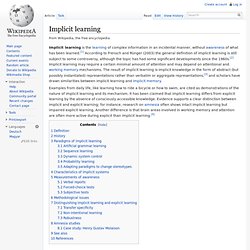

401004_461569343929480_203773379_n.jpg (960×563) Personality test based on C. Jung and I. Briggs Myers type theory. The Sixteen Personality Types - High-Level. ISTJ - The Duty Fulfiller Serious and quiet, interested in security and peaceful living.

Extremely thorough, responsible, and dependable. Well-developed powers of concentration. Usually interested in supporting and promoting traditions and establishments. Well-organized and hard working, they work steadily towards identified goals. Click here for a detailed description of ISTJ. ISTP - The Mechanic Quiet and reserved, interested in how and why things work. Click here for a detailed description of ISTP. ISFJ - The Nurturer Quiet, kind, and conscientious. Click here for a detailed description of ISFJ. ISFP - The Artist Quiet, serious, sensitive and kind. Click here for a detailed description of ISFP. INFJ - The Protector Quietly forceful, original, and sensitive. Click here for a detailed description of INFJ. INFP - The Idealist Quiet, reflective, and idealistic. Click here for a detailed description of INFP. INTJ - The Scientist Independent, original, analytical, and determined. Spinning Dancer. If the foot touching the ground is perceived to be the left foot, the dancer appears to be spinning clockwise (if seen from above); if it is taken to be the right foot, then she appears to be spinning anti-clockwise.

The Spinning Dancer, also known as the silhouette illusion, is a kinetic, bistable optical illusion resembling a pirouetting female dancer. The illusion, created in 2003 by web designer Nobuyuki Kayahara,[1][2] involves the apparent direction of motion of the figure. Some observers initially see the figure as spinning clockwise (viewed from above) and some anti-clockwise. Additionally, some may see the figure suddenly spin in the opposite direction.[2] The illusion derives from the lack of visual cues for depth. When she is facing to the left or to the right, her breasts and ponytail clearly define the direction she is facing, although there is ambiguity in which leg is which. Psychology of visual perception[edit] Bistable perception[edit] Further analysis[edit]
Why Not Train A Child? Sequence learning. In cognitive psychology, sequence learning is inherent to human ability because it is an integrated part of conscious and nonconscious learning as well as activities.

Sequences of information or sequences of actions are used in various everyday tasks: "from sequencing sounds in speech, to sequencing movements in typing or playing instruments, to sequencing actions in driving an automobile. "[1] Sequence learning can be used to study skill acquisition and in studies of various groups ranging from neuropsychological patients to infants.[1] According to Ritter and Nerb, “The order in which material is presented can strongly influence what is learned, how fast performance increases, and sometimes even whether the material is learned at all.”[2] Sequence learning, more known and understood as a form of explicit learning, is now also being studied as a form of implicit learning as well as other forms of learning.
History[edit] Types of sequence learning[edit] Sequence learning problems[edit] Implicit learning. Implicit learning is the learning of complex information in an incidental manner, without awareness of what has been learned.[1] According to Frensch and Rünger (2003) the general definition of implicit learning is still subject to some controversy, although the topic has had some significant developments since the 1960s.[2] Implicit learning may require a certain minimal amount of attention and may depend on attentional and working memory mechanisms.

The result of implicit learning is implicit knowledge in the form of abstract (but possibly instantiated) representations rather than verbatim or aggregate representations,[3] and scholars have drawn similarities between implicit learning and implicit memory. Examples from daily life, like learning how to ride a bicycle or how to swim, are cited as demonstrations of the nature of implicit learning and its mechanism. Definition[edit] Some definitions among dozens: History[edit] Paradigms of implicit learning[edit]
Stress & Anxiety. Adult ADHD. Bipolar. Depression.